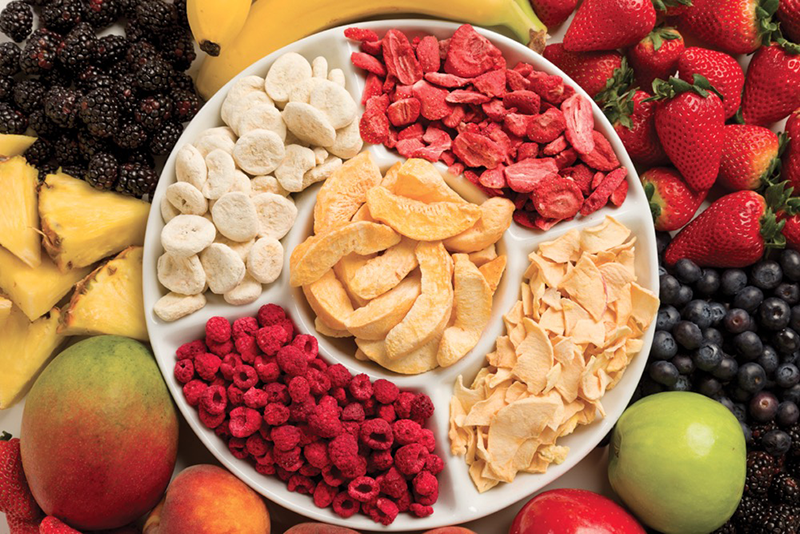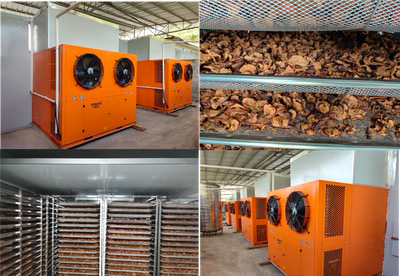
Content Menu
● Understanding the Basics
>> What is a Condenser Dryer?
>> What is a Heat Pump Dryer?
● Key Differences Between Condenser and Heat Pump Dryers
● Applications in Food Drying
>> Importance of Food Drying
>> Role of Condenser and Heat Pump Dryers in Food Processing
● Advantages of Using Food Dryers
● Choosing the Right Dryer for Your Needs
● Technological Innovations in Food Drying
>> Emerging Trends
● Case Studies Highlighting Successful Implementations
>> The Vegery Case Study
>> Innovations at BranchOut Foods
● Future Trends in Food Dehydration Technology
● Economic Impact of Food Dehydration Technologies
● Conclusion
● FAQ
>> 1. What are the main differences between condenser dryers and heat pump dryers?
>> 2. Can I use a condenser dryer for food processing?
>> 3. Are heat pump dryers worth the investment?
>> 4. How do I maintain my food dryer?
>> 5. What types of foods can be dried using these machines?
In the realm of drying technology, particularly in the context of food drying, there are various types of dryers that serve different purposes. Among these, condenser dryers and heat pump dryers have gained significant attention. This article delves into the intricacies of these two types of dryers, their mechanisms, benefits, and applications, particularly in the food industry.

Understanding the Basics
What is a Condenser Dryer?
A condenser dryer is a type of clothes dryer that uses a heat exchanger to condense moisture from wet air. The process involves heating the air, which then absorbs moisture from the clothes. This moist air is then passed through a heat exchanger where it cools down, causing the moisture to condense into water, which is collected in a tank or drained away.
What is a Heat Pump Dryer?
A heat pump dryer operates on a similar principle but is generally more energy-efficient. It uses a refrigerant system to transfer heat from the air inside the dryer to heat the air that dries the clothes. The key difference lies in its ability to recycle heat within the system, making it more eco-friendly and cost-effective over time.
Key Differences Between Condenser and Heat Pump Dryers
| Feature | Condenser Dryer | Heat Pump Dryer |
| Energy Efficiency | Less efficient than heat pump | Highly energy-efficient |
| Drying Time | Generally faster drying times | Longer drying times due to lower temperatures |
| Initial Cost | Typically lower initial cost | Higher initial investment |
| Operating Cost | Higher due to energy consumption | Lower due to energy savings |
| Maintenance | Easier maintenance | Requires more technical knowledge |
Applications in Food Drying
Importance of Food Drying
Food drying is an ancient preservation method that extends shelf life by removing moisture that bacteria, yeast, and molds need to thrive. In modern food processing, drying is crucial for maintaining flavor, texture, and nutritional value while ensuring safety.
Role of Condenser and Heat Pump Dryers in Food Processing
Both condenser and heat pump dryers can be utilized in food drying processes:
- Condenser Dryers: These are often used for drying fruits and vegetables quickly. They can maintain higher temperatures which are beneficial for certain products.
- Heat Pump Dryers: These are ideal for delicate items like herbs or flowers that require lower temperatures to preserve their essential oils and flavors. Their energy efficiency also makes them suitable for large-scale operations where cost savings are essential.
Advantages of Using Food Dryers
- Preservation: Extends shelf life by removing moisture.
- Nutritional Retention: Proper drying techniques can retain most nutrients.
- Flavor Enhancement: Concentrates flavors by removing water content.
- Convenience: Dried foods are lightweight and easy to store.
Choosing the Right Dryer for Your Needs
When selecting between a condenser dryer and a heat pump dryer for food processing, consider the following factors:
- Type of Food: Delicate foods may benefit from heat pump dryers.
- Energy Costs: Evaluate long-term operating costs versus initial investment.
- Production Volume: Larger operations may require more efficient systems.
- Space Requirements: Ensure adequate space for installation and operation.

Technological Innovations in Food Drying
Emerging Trends
The food drying industry is witnessing significant technological advancements aimed at improving efficiency and product quality. Some notable trends include:
- Microwave Drying: This method utilizes electromagnetic waves to generate heat within the food itself, allowing for rapid moisture removal while preserving flavor and nutrients.
- Radio Frequency Drying: Similar to microwave drying but uses radio waves to create heat through molecular friction, resulting in uniform drying without overheating.
- Vacuum-Microwave Drying (VMD): Combines vacuum conditions with microwave heating to achieve rapid drying at low temperatures, preserving color, flavor, and nutrients effectively.
These innovative techniques not only enhance product quality but also improve energy efficiency compared to traditional methods.
Case Studies Highlighting Successful Implementations
The Vegery Case Study
One notable example is The Vegery in New Zealand, which faced challenges maintaining quality while increasing production capacity. They adopted advanced drying solutions that allowed them to produce high volumes without compromising on food safety or quality. This case illustrates how modern dryers can significantly enhance production efficiency while adhering to stringent food safety standards.
Innovations at BranchOut Foods
BranchOut Foods has developed advanced dehydration technologies that focus on preserving flavor and nutrients better than traditional methods. Their "Gentle Dry" technology utilizes low temperatures within a vacuum chamber to remove moisture without degrading food quality. This innovation highlights how companies are addressing consumer demands for high-quality dried products.
Future Trends in Food Dehydration Technology
As we look ahead into the future of food dehydration technology, several trends are emerging that will shape how we process dried foods:
- Sustainability Focus: With growing environmental concerns among consumers and businesses alike, there is an increasing demand for sustainable practices in food production. This includes reducing energy consumption during dehydration processes as well as minimizing waste generated during production.
- Smart Technology Integration: The incorporation of smart technology into food processing equipment allows real-time monitoring and adjustments based on specific needs during dehydration processes. IoT-enabled devices can optimize temperature settings based on humidity levels or product type being dried.
- Consumer Preferences Shifting Towards Healthier Options: As consumers become more health-conscious about their dietary choices, there is a rising interest in natural snacks with no added preservatives or artificial colors—making high-quality dried fruits and vegetables more appealing than ever before.
Economic Impact of Food Dehydration Technologies
The economic implications of adopting advanced dehydration technologies cannot be understated:
- Cost Savings Over Time: Although initial investments may be higher when switching from traditional methods to advanced technologies like heat pumps or vacuum-assisted systems; businesses often find substantial savings through reduced energy costs over time alongside improved product quality leading to higher sales margins.
- Market Growth Opportunities: The global market for dehydrated foods continues expanding rapidly due largely because consumers seek convenient yet nutritious options—this trend presents lucrative opportunities for manufacturers willing to invest in innovative equipment tailored towards producing high-quality dried products efficiently.
Conclusion
In conclusion, while both condenser dryers and heat pump dryers serve essential roles in food processing, their differences make them suitable for different applications. Understanding these distinctions allows manufacturers and processors to select the most appropriate technology for their needs. As energy efficiency becomes increasingly important in industrial processes, heat pump dryers may offer significant advantages despite their higher initial costs.
The future of food dehydration looks promising with continuous advancements in technology aimed at improving efficiency, sustainability, and product quality. As consumer demand for healthy and convenient food options grows, investing in modern drying technologies will be crucial for businesses aiming to stay competitive in the market.

FAQ
1. What are the main differences between condenser dryers and heat pump dryers?
Condenser dryers are generally less energy-efficient than heat pump dryers, which recycle heat within their system. While condenser dryers tend to have faster drying times, heat pump dryers operate at lower temperatures and are better suited for delicate items.
2. Can I use a condenser dryer for food processing?
Yes, condenser dryers can be used for food processing; however, they may not be as efficient as heat pump dryers for delicate items that require lower temperatures.
3. Are heat pump dryers worth the investment?
Heat pump dryers may have a higher initial cost but offer long-term savings on energy bills due to their efficiency. For large-scale operations, this can lead to significant cost reductions over time.
4. How do I maintain my food dryer?
Regular maintenance includes cleaning filters, checking seals for leaks, and ensuring proper airflow around the unit. Always refer to the manufacturer's guidelines for specific maintenance requirements.
5. What types of foods can be dried using these machines?
Both types of dryers can handle various foods including fruits, vegetables, herbs, meats (jerky), and even flowers. The choice depends on the desired drying temperature and time.












